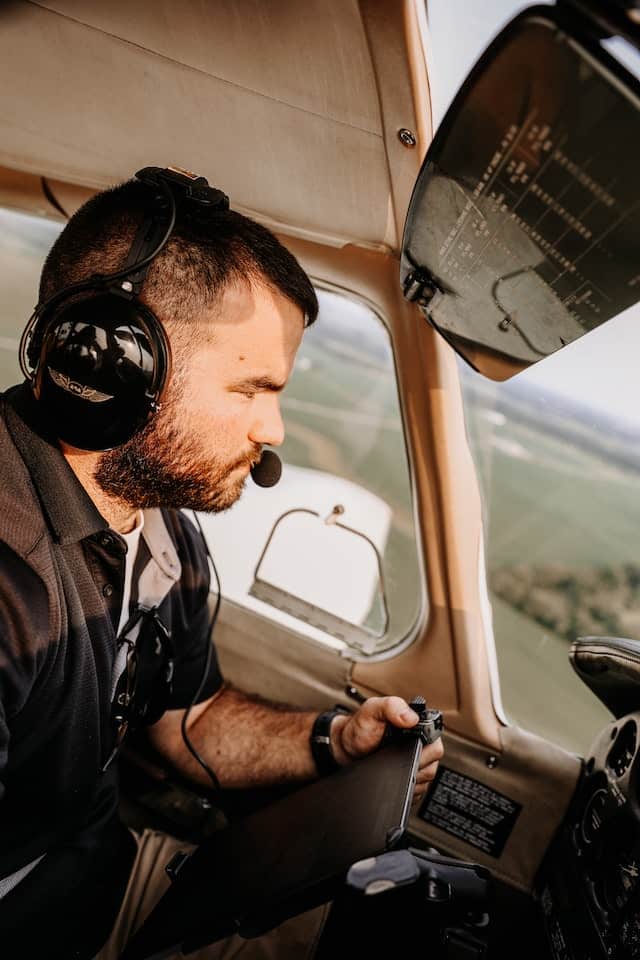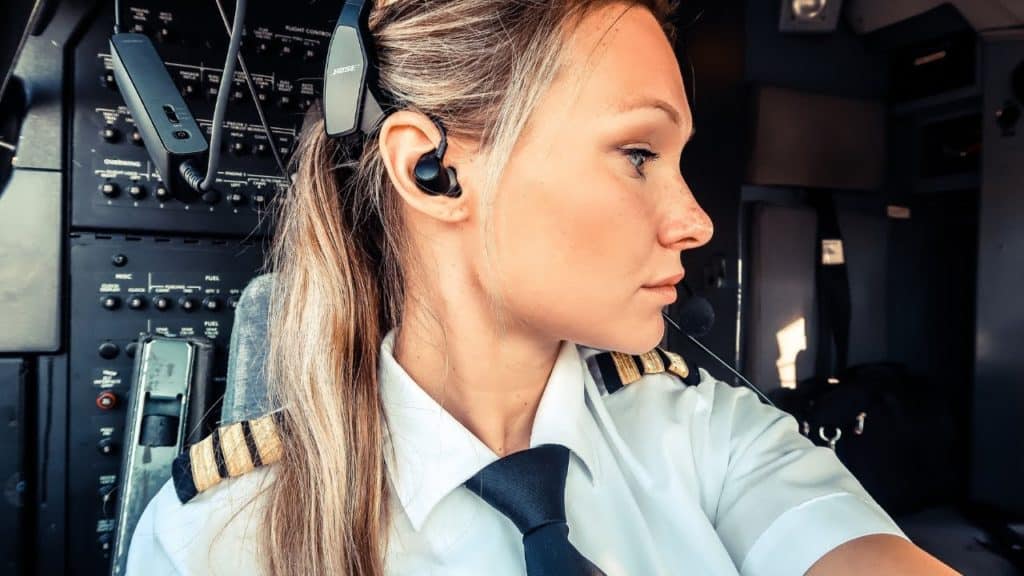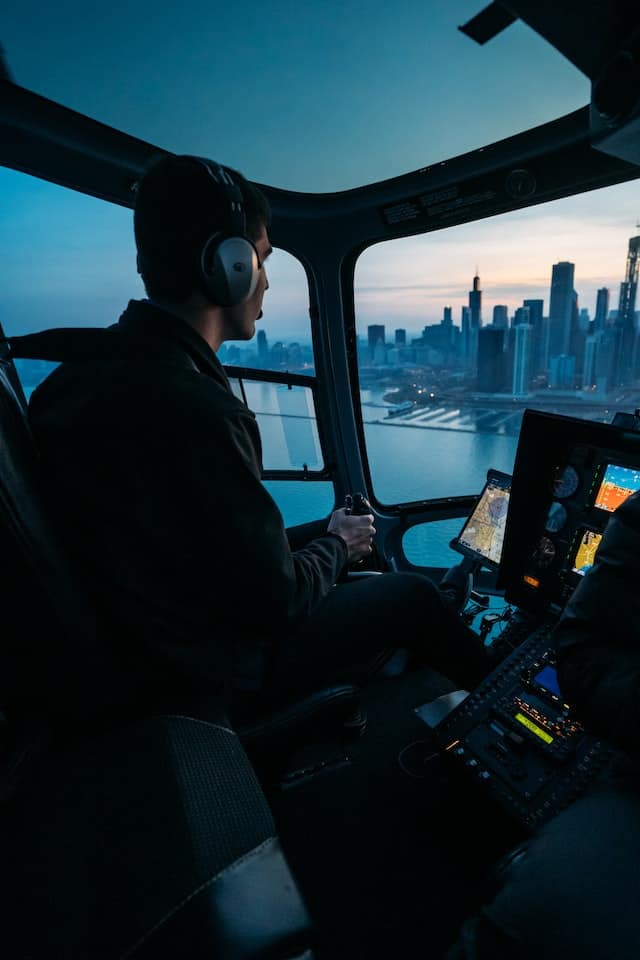The A-Z of Pilot Headsets: A Comprehensive Look
Why Pilot Headsets Are Essential in Aviation
Pilot headsets are an essential component of aviation equipment that is critical to the safety and efficiency of pilots as they communicate with air traffic control, crew members, and passengers. These headsets provide superior noise reduction capabilities that help eliminate unwanted background noise, ensuring that pilots can hear critical communication clearly and without any disruption. Pilot headsets also offer effective hearing protection for pilots in noisy environments that reduces the risk of hearing damage caused by prolonged exposure to high levels of sound.
This is particularly important because pilots are often exposed to loud noises such as engine sounds, wind noise during flight operations, and even sudden changes in cabin pressure. The use of pilot headsets ensures that flight crews can communicate effectively while also staying protected from loud noises.
Ready to embark on a pilot’s journey? Elevate your experience with our comprehensive guide to pilot headsets.
Defining Pilot Headsets
A pilot headset is a piece of electronic equipment worn over the ears and around the head by pilots during flight operations for communication purposes. These headsets have ear cups or ear pads equipped with speakers or headphones for audio output and a microphone boom located near the mouth for two-way communication with air traffic control or other crew members.

The quality and effectiveness of a pilot headset’s components such as ear cups, microphones, cables, etc., determine its overall performance level. One key aspect of these headsets is their ability to reduce external noise levels efficiently while allowing clear transmission between pilot and air traffic control operators.
Purpose Of The Article
The purpose of this article is to provide you with a comprehensive guide on pilot headsets so you can make an informed decision when purchasing one. We’ll cover different types available on the market today along with their features advantages/disadvantages to enable you to make an educated choice about which headset best suits your needs. Additionally, we’ll explore the different components of pilot headsets in detail, and their functions in enhancing communication and reducing external noise levels for better hearing protection.
We’ll recommend some of the best brands and models to look out for when choosing a pilot headset. With this information, you will be able to select the best headset that not only suits your budget but also provides superior noise reduction capabilities while ensuring clear communication with air traffic control.
Types of Pilot Headsets
Pilot headsets can be divided into two main categories: passive noise reduction headsets and active noise reduction headsets. While both serve the same purpose of reducing the noise level in the cockpit, they differ in their technology and level of effectiveness.
Passive Noise Reduction Headsets
Passive noise reduction headsets work by physically blocking out external sounds through a well-sealed ear cup. They do not require any electronic components, making them less expensive than active noise-reduction headsets.
These types of headsets are perfect for flight training, where a pilot is working at lower altitudes where the engine and wind noise is not as high. Passive noise reduction headsets generally weigh less than active models, making them more comfortable to wear for extended periods.
However, passive noise reduction has some disadvantages including that they are not as effective in reducing low-frequency sounds like engine vibration and their sound-blocking ability decreases over time. Examples of passive noise reduction headsets include Bose A20 Aviation Headset, David Clark H10-13.4 Aviation Headset, and Lightspeed Sierra ANR Aviation Headset.
Active Noise Reduction Headsets
Active Noise Reduction (ANR) technology is used in these types of headsets to reduce external sounds by emitting an out-of-phase or anti-noise signal through the headset speakers. The headset microphone detects outside noises such as engine or wind sounds then creates an opposing sound wave that cancels out unwanted sound frequencies to reduce overall cabin noise levels. ANR technology provides better protection against loud cockpit noises like engine roar or clicking instruments due to its ability to cancel out lower frequency sounds effectively meaning pilots can hear communications from air traffic control or other crew members more clearly and comfortably.
The downside of ANR is that it requires batteries to power the electronics which add weight to the headset making it heavier than passive models. The cost of ANR headsets is higher than passive models due to the added technology.
Examples of active noise reduction headsets include Bose ProFlight Series 2, Lightspeed Zulu 3 Aviation Headset, and Sennheiser S1 Digital Active Noise Cancelling Aviation Headset. Choosing a pilot headset depends on personal preference and how much background noise the pilot wants to filter out.
While ANR headsets tend to offer better noise reduction capabilities, they come at a higher price point. On the other hand, while PNR headsets offer less noise isolation capability, they are relatively cheaper and lighter in weight than ANR models.

Components of Pilot Headsets
Pilot headsets are designed to ensure optimal communication between cockpit crew and with the control tower. A typical pilot headset comprises of three primary components – ear cups, microphone boom, and cables. Each component plays an important role in the overall performance of the device, making them essential parts that require careful consideration when choosing a headset.
Ear Cups: Definition and Features
Ear cups are perhaps the most recognizable part of pilot headsets. These soft padded cups fit over each ear to help block out external noise while allowing pilots to hear radio transmissions clearly. The cups come in different sizes and shapes for various wearer comfort levels.
They are generally made from foam or gel, which provides extra cushioning around the ears. When selecting ear cups for your headset, it is crucial to consider factors like noise reduction capabilities, comfort level, and durability.
Noise reduction is especially important because pilots need to hear radio transmissions even in noisy environments like airports or during turbulence. A high-quality ear cup should be able to block out as much background noise as possible without sacrificing clarity of audio from communications inside the aircraft.
Advantages and Disadvantages
The primary advantage of using ear cups is their ability to provide effective passive noise reduction for pilots while also being very comfortable. However, some disadvantages exist too; one disadvantage is that they can be quite warm after long hours of use as they trap heat inside them.
Microphone Boom: Definition and Features
The microphone boom is another essential component of a pilot’s headset; it’s what allows for clear communication between cockpit crew members and air traffic controllers on the ground. The boom consists primarily of a flexible arm attached beneath one side (usually left) ear cup that holds a directional microphone at its end.
The directional mic helps pick up only sounds that are within its field of view, which helps to reduce background noise generated inside the cockpit. The boom’s flexibility also allows it to be positioned in the optimal spot for each individual user.
Advantages and Disadvantages
The microphone boom’s significant advantage is that it helps reduce unwanted noise and ensures clear communication with air traffic controllers. However, its downsides are that it can be quite cumbersome and takes time to get used to.
Cables, Plugs, Connectors, Adapters, etc.: Definitions of Each Component
The cables, plugs, connectors, and adapters are other essential components of a pilot headset that often go overlooked but are just as critical for optimal functionality. They connect the headset’s ear cups and microphone boom to aircraft communication systems like radios and intercoms.
Cables come in different lengths ranging from short jumper wires that connect directly to radios or intercoms mounted on the cockpit’s instrument panel to long extension cables designed for use in larger aircraft. Plugs are usually found on one end of a cable; they make connections between different parts seamless.
Connectors help connect multiple devices together using various methods such as wired or wireless connections. Adapters allow pilots working with multiple types of aircraft or communication systems to switch between these easily; they convert various connector sizes so that they fit into specific ports in an aircraft’s panel instruments.
Features, Advantages, Disadvantages
Cables vary by length depending on intended use cases; however, longer cables may lead to tangling issues which may be frustrating for pilots who need quick access during emergencies. Adapters can also be bulky and take up room inside an already crowded cockpit space; jumping from system to system during emergencies might stress one out if not well prepared. However when selected carefully these components offer immense benefits such as versatility, durability, and universal connectivity among others.
How to Choose the Right Pilot Headset?
Comfortability
When it comes to choosing the right pilot headset, comfort is a crucial factor. Pilots wear headsets for long hours, so it’s important to choose one that doesn’t cause pain or discomfort.
Look for headsets with adjustable headbands and ear cups that fit well over your ears without causing pressure points. Lightweight materials like carbon fiber and high-quality leather padding can also reduce discomfort.
Noise Reduction Level
Another important factor when choosing a pilot headset is noise reduction level. Look for headsets with high noise reduction ratings (NRR) as they can help block out engine noise and other background noise in the cockpit. Active noise-canceling headsets are often preferred because they utilize technology to cancel out external sounds.

Durability
Pilot headsets need to be durable enough to withstand regular use in the cockpit. They’re often exposed to extreme temperatures, humidity, and other factors that can damage them over time. Look for headsets made from durable materials like reinforced plastic or metal frames, with cables that are resistant to tangles.
Price Range
The cost of a pilot headset can vary widely depending on its features and quality. Entry-level models start at around $100 while high-end models can cost upwards of $1,000 or more. Consider your budget carefully before making a purchase, but keep in mind that investing in a high-quality headset may save you money in the long run by reducing fatigue and potential hearing damage.
Recommended Brands/Models
Some of the most popular and reputable brands of pilot headsets are Bose A20 Aviation Headset, Lightspeed Zulu 3 Aviation Headset, David Clark H10-13.4 Aviation Headset, among others. These brands have gained recognition over time for providing pilots with high-quality headsets that offer exceptional comfort, noise reduction, and durability. Each of these brands has its unique features and advantages, so it’s important to consider what best suits your needs and preferences.
Choosing the right pilot headset can make all the difference in flying comfort and safety. Consider factors like comfort, noise reduction level, durability, and price range when making a purchase.
Investing in a high-quality headset may cost more upfront but may ultimately save you money by reducing fatigue and protecting your hearing. With the right headset in tow, you can fly with confidence knowing that you’re equipped with the best gear available on the market today.
The Breakdown of Modern Aviation Headsets
The world of aviation headsets is dynamic and rapidly evolving. Understanding the intricate details of these vital pieces of technology can significantly improve your flight experience. Dive deep into our guide on modern aviation headsets and elevate your understanding of the mechanisms that enable effective communication and enhanced safety during flights.
The Role of Headsets in Piloting
Headsets are not just about sound; they serve many critical functions in the cockpit, from noise reduction to vital communication. In our comprehensive explanation of the role of headsets in piloting, we delve into the intricacies of why these tools are more than just a pair of speakers and a microphone. They are a direct link to ground control, instrumental in maintaining flight safety and efficient navigation.
Technological Advances in Pilot Headsets
Technology in the aviation industry is advancing at a fast pace, and pilot headsets are no exception. They have come a long way from the bulky and often uncomfortable models of the past. Today’s headsets are brimming with advanced features like active noise reduction, Bluetooth connectivity, and even voice-activated controls. For a detailed look into the technological advances in pilot headsets, check out our article, where we explore the latest features and how they enhance the pilot’s experience.





